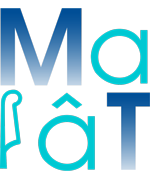Unlocking Hope: Microbiome Restoration in the Battle Against aGvHD
Interview with Dr. Alexander Schauwvlieghe, hematologist at AZ Sint-Jan Brugge AV Hospital
Understanding GvHD
GvHD is a life-threatening complication that can occur after an allogenic hematopoietic stem cell transplant (allo-HSCT). In this treatment, that could be curative for patients with blood cancers, a patient’s own damaged or diseased blood-forming stem cells are destroyed. Then they are replaced with healthy stem cells from a donor.
GvHD occurs when the donor stem cells (“the graft”) attack healthy cells in the patient (“the host”), causing the condition “graft-versus-host disease”. There are two main categories of GvHD: chronic and acute. Acute GvHD usually develops within the first 100 days after transplantation. It can affect the skin, the liver and the gastrointestinal (GI) tract (stomach, intestines, and colon). Somewhere between 30 to 70% of patients develop aGVHD following allo-HSCT1. The mortality rate is high with 80% of patients dying at 2 months if they don’t respond to current and available treatments.

Dr. Alexander Schauwvlieghe, hematologist at AZ Sint-Jan Brugge AV Hospital
"I'm a strong advocate for gut microbiome-based treatments, such as MaaT013, that prioritize immune restoration in GvHD. This approach helps maintain the patient's immune function, reducing the risk of infectious complications and relapse.”
Microbiome-based therapies in onco-hematology: a paradigm shift
Dr. Schauwvlieghe sheds light on microbiome-based treatment as a salvage therapy for aGvHD, citing its potential to enhance patient outcomes while minimizing adverse effects.
How do you treat a patient with aGvHD?
Dr. Schauwvlieghe: We start them straight away on high doses of corticosteroids, and if it doesn’t work, we rapidly start treating with ruxolitinib. However, if conventional treatments fail to yield improvement, we move quickly to salvage therapy using Fecal Microbiota Transfer. If treatment is delayed, the gastrointestinal (GI) tract becomes vulnerable to infections, presenting a significant challenge. This situation requires treating the patient for infections and administering high doses of immunosuppressive therapy to manage the disease. You really need to be aggressive in the treatment for these patients given the poor prognosis if they don’t respond to treatment.
What therapeutic options are currently available? How do you see the treatment landscape evolving?
Dr. Schauwvlieghe: As of today, there are no specific guidelines regarding what to do in third line: this is mostly based on experience. In addition to Fecal Microbiota Transfer, several approaches are currently implemented in medical need programs, and some have been tried i.e, TNF inhibition, yet it didn’t show good results, and urinary-derived human chorionic gonadotropin and epidermal growth factor (uhCG/EGF, most commonly available as Pregnyl®) combined with Vedolizumab. The latest has shown promising results, yet you mostly use it when your back is against the wall.
I’m more a fan of fecal microbiota treatment, we’ve administered it to many patients and responses have been impressive. The data gathered are remarkable, and our local experience confirms these outstanding results. Colleagues in other countries who’ve also implemented this approach report similar outcomes. But there are still some colleagues who are quite skeptical about fecal microbiota treatment in these patients. However, I think the skepticism is not really justified. The real advantage of fecal microbiota therapy lies in its non-immunosuppressive nature. Therefore, it drastically reduces the risk of infectious complications, a significant drawback associated with other immunosuppressive treatment options.
I do a lot of research on the management of opportunistic infections in hematology patients, I’m involved in a clinical trial planned in collaboration with academic centers in Flanders to determine whether reducing antibiotic coverage in patient receiving intensive chemotherapy with febrile neutropenia leads to fewer cases of aGvHD after allogeneic stem cell transplant (the SAFE study sponsored by Standup against Cancer). Therefore, I’m also a big fan also of the PHOEBUS trial2 and we will try to include as many patients as possible because I’m really convinced in the entire idea of fecal microbiota transfer.

Patient Acceptance and Rapid Clinical Improvement with MaaT013 Treatment in aGVHD
How did the patient react when you suggested this treatment with MaaT013?
Dr. Schauwvlieghe: It’s well accepted by the patients. I talk early to patients on the several options when acute GVHD arises because to get all the logistics in place, I want treat as early as possible. If you follow your patient very thoroughly, you will see within a few days if the patient responds to steroids or ruxolitinib. The frequency, the amount of diarrhea, these are all clinical gut feelings informing on how the treatment is progressing. If you inform the patient early about all the steps ahead and treatment options, they are more at ease on the process, and we have already answered all their questions in advance of doing the procedure.
What were the initial benefits of the treatment for the patient? How soon did you observe clinical improvement in the patient following treatment with MaaT013?
Dr. Schauwvlieghe: The improvement is quite immediate, within a time frame of one week you can see already a difference. When patients have aGvHD, their sleep is often disrupted by frequent bowel movements. However, after treatment with microbiome therapy, this improves, allowing for better rest, and they start to mobilize. As they begin to mobilize more, their appetite returns, leading to an overall enhancement in their quality of life. This improvement is also attributed to the avoidance of daily medication intake, which can cause numerous side effects due to immune suppression. I’m a strong advocate for treatments that prioritize minimal immune suppression. This approach helps maintain the patient’s immune function without compromising it excessively, therefore reducing the risk of infectious complications and relapse. In patients with acute myeloid leukemia, excessive immune suppression can diminish the graft-versus-leukemia effect, making them more susceptible to relapse. Therefore, therapies that strike a balance between managing the condition and preserving immune function are crucial for long-term success.
The Critical Role of Early Access Programs (EAP): Bridging the Gap Between Innovation and Patient Care
Could you share your experience with using MaaT013 in the EAP?
Dr. Schauwvlieghe: I find the procedure in EAP to be quite straightforward. Certainly, for the first patient, gathering all the necessary documentation may take some time. However, with experience, the process becomes much more efficient. Typically, it takes about a week (seven working days) to receive the product and administer it. I am convinced of its efficacy and foresee us applying for it again in the future. I believe that everyone involved in treating patients within the study or the medical need program shares this conviction. However, there is a learning curve, and you need to do it for the first time.
Before participating in the EAP, I had experience with a similar procedure while working at another hospital. Yet, I am particularly enthusiastic about the rigor and scientific approach of your current approaches. Conducting these procedures properly and in a scientifically sound manner is crucial. While enema treatments are effective, they can be invasive for patients. Transitioning to a pill form will be easier for patients in terms of comfort.
Is there anything else you would like to add?
Dr. Schauwvlieghe: New advancements in the treatment of aGvHD are currently occurring, although it’s important to acknowledge that many of these still carry immune suppressive effects. Personally, I continue to lean towards pill-based treatments due to their potential to minimize the burden on patients. From my clinical experience, I’ve found MaaT013 administered via enema to be both straightforward and devoid of significant side effects. We’ve already successfully utilized this approach with a dozen patients.
Sources:
1. Source Lymphoma & Leukemia Society
2. The PHOEBUS trial is a Phase II study evaluating MaaT033 in blood cancer patients who are receiving allo-HSCT aimed at assessing its efficacy of as an adjunctive treatment to boost overall survival at 12 months.

